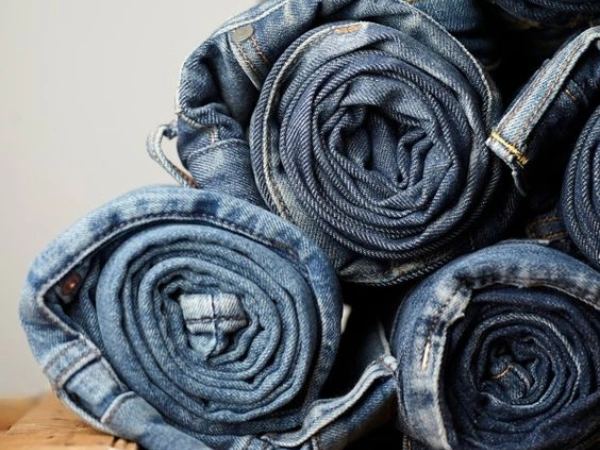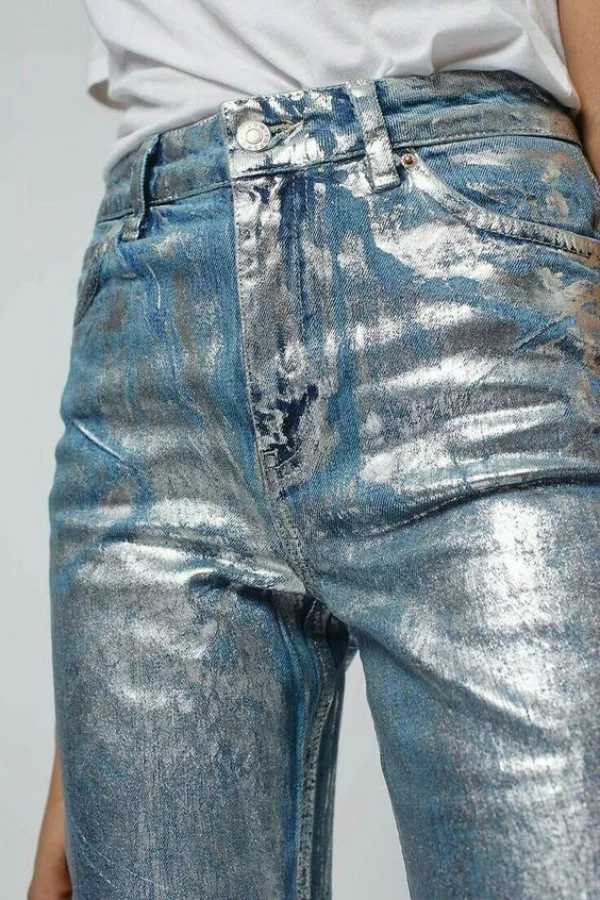Introduction
The textile industry is a cornerstone of the global economy, encompassing a wide range of processes from fiber production to garment manufacturing. Among these processes, washing is a critical step that not only enhances the aesthetic appeal of fabrics but also ensures their cleanliness and longevity. Traditional washing methods often rely heavily on water and chemical detergents, which can have significant environmental impacts. As the industry evolves, there is a growing demand for more sustainable and efficient washing techniques.
In this context, ozone and laser washing have emerged as innovative technologies that promise to revolutionize textile processing. Ozone washing utilizes the powerful oxidizing properties of ozone gas to clean fabrics, while laser washing employs focused light beams to achieve precise and controlled fabric treatment. Both methods offer unique advantages that address the pressing need for sustainability in the textile industry.
Understanding Ozone Washing
- Definition and Chemical Properties of Ozone
Ozone (O₃) is a triatomic molecule composed of three oxygen atoms. It is a pale blue gas with a distinct, sharp smell, commonly associated with the fresh scent after a thunderstorm. Ozone is a powerful oxidizing agent, which means it can react with various substances, breaking down organic materials and eliminating bacteria and odors. In the context of textile processing, ozone is generated on-site using ozone generators, which convert oxygen (O₂) from the air into ozone.
- Mechanism of Ozone Washing in Textile Processing
The mechanism of ozone washing involves several key processes. When ozone is introduced into the washing chamber, it dissolves in water, forming a solution that contains both ozone and hydroxyl radicals. These reactive species penetrate the fabric fibers, breaking down dirt, stains, and other contaminants at a molecular level. The oxidation process not only cleans the fabric but also helps to remove color and improve the overall appearance of the textiles.
Ozone washing can be performed in various stages of textile processing, including pre-treatment, dyeing, and finishing. Its versatility makes it suitable for a wide range of fabrics, from cotton to synthetic materials. Additionally, ozone washing can be integrated into existing washing systems, making it a feasible option for many textile manufacturers.
Advantages of Ozone Washing
- Environmental Benefits
One of the most significant advantages of ozone washing is its positive impact on the environment. Traditional washing methods consume vast amounts of water and often require the use of harmful chemicals, which can lead to water pollution and resource depletion. In contrast, ozone washing significantly reduces water usage—by up to 90%—and minimizes the need for chemical detergents. This not only conserves water but also reduces the environmental footprint of textile production.
- Cost-Effectiveness
In addition to its environmental benefits, ozone washing can also be cost-effective for textile manufacturers. The reduction in water and chemical usage translates to lower operational costs. Furthermore, ozone has a relatively low production cost, especially when generated on-site. The efficiency of ozone washing can lead to shorter processing times, allowing manufacturers to increase their output without compromising quality.
- Enhanced Fabric Care
Ozone washing not only cleans fabrics effectively but also enhances their care. The gentle oxidation process helps to maintain the integrity of the fibers, reducing wear and tear compared to traditional washing methods. This is particularly important for delicate fabrics that require special handling.
Moreover, ozone washing can improve the colorfastness of dyed fabrics, preventing fading and ensuring that garments retain their vibrant colors for longer periods. This quality enhancement can lead to increased customer satisfaction and loyalty, as consumers are more likely to choose products that maintain their appearance over time.
Exploring Laser Washing
Definition and Principles of Laser Technology
Laser washing is an advanced textile processing technique that utilizes focused laser beams to treat fabrics. The term “laser” stands for “Light Amplification by Stimulated Emission of Radiation,” and it refers to the emission of light through a process of optical amplification. In the context of textile washing, lasers are employed to achieve precise and controlled alterations to the fabric surface, allowing for a variety of effects, including fading, distressing, and pattern creation.
The principle behind laser washing lies in the interaction between the laser beam and the fabric material. When the laser light is directed onto the fabric, it generates heat, which can vaporize or oxidize the surface fibers. This process can be finely tuned to achieve specific results, making laser washing a versatile tool in the textile industry.
How Laser Washing Works in the Textile Industry
The laser washing process typically involves several steps. First, the fabric is prepared and placed in a laser washing machine, which is equipped with a laser source and a computer-controlled system. The operator can then program the machine to execute specific patterns or effects based on the desired outcome.

Once the machine is set up, the laser beam is directed onto the fabric surface. The intensity, duration, and movement of the laser can be adjusted to create various effects. For instance, a higher intensity may be used for more aggressive fading, while a lower intensity can achieve subtle distressing. The precision of laser technology allows for intricate designs and patterns that would be difficult to replicate using traditional washing methods.
Benefits of Laser Washing
- Precision and Control
One of the most significant advantages of laser washing is the level of precision and control it offers. Unlike conventional washing techniques, which can result in unpredictable outcomes, laser washing allows manufacturers to achieve consistent and repeatable results. This precision is particularly valuable in fashion and apparel production, where specific designs and effects are often required.
- Reduction in Water and Chemical Usage
Similar to ozone washing, laser washing significantly reduces the amount of water and chemicals required in the textile processing stage. Traditional washing methods can consume hundreds of liters of water per garment, along with various chemical detergents. In contrast, laser washing typically requires minimal water, as the process primarily relies on the laser’s energy to achieve the desired effects.
This reduction in resource consumption aligns with the growing demand for sustainable practices in the textile industry. For instance, a study by the European Commission highlighted that laser washing can reduce water usage by up to 90% compared to conventional washing methods, making it an attractive option for environmentally conscious manufacturers.

- Unique Aesthetic Effects on Fabrics
Laser washing also allows for the creation of unique aesthetic effects that are difficult to achieve through traditional methods. The ability to precisely control the laser’s intensity and movement enables manufacturers to produce intricate designs, patterns, and textures on fabrics. This capability opens up new avenues for creativity in fashion design.
Comparative Analysis of Ozone and Laser Washing
- Key Differences Between the Two Technologies
While both ozone and laser washing offer significant advantages over traditional washing methods, they differ in their mechanisms and applications. Ozone washing relies on the chemical properties of ozone to oxidize and clean fabrics, while laser washing utilizes focused light to achieve precise alterations to the fabric surface.
Ozone washing is particularly effective for general cleaning and stain removal, making it suitable for a wide range of fabrics. In contrast, laser washing excels in creating unique designs and effects, making it ideal for fashion applications where aesthetics are paramount.
- Situations Where One Method May Be Preferred Over the Other
The choice between ozone and laser washing often depends on the specific requirements of the textile processing task. For instance, if a manufacturer is primarily focused on reducing water and chemical usage while maintaining fabric integrity, ozone washing may be the preferred option. On the other hand, if the goal is to create intricate designs or achieve specific aesthetic effects, laser washing would be more suitable.
- Environmental Impact Comparison
Both technologies contribute to reducing the environmental impact of textile processing, but they do so in different ways. Ozone washing minimizes water and chemical usage, while laser washing significantly reduces water consumption and eliminates the need for chemical detergents. Ultimately, the choice between the two may depend on the specific environmental goals of the manufacturer and the nature of the fabrics being processed.
Challenges and Limitations
- Potential Drawbacks of Ozone Washing
Despite its many advantages, ozone washing is not without challenges. One potential drawback is the need for specialized equipment and training to ensure safe and effective use of ozone. Additionally, ozone can be hazardous in high concentrations, necessitating proper ventilation and safety measures in the workplace.
- Limitations of Laser Washing Technology
Laser washing also has its limitations. The initial investment in laser technology can be significant, which may deter some manufacturers from adopting it. Furthermore, not all fabrics are suitable for laser treatment, as certain materials may be damaged by the intense heat generated during the process. Manufacturers must carefully consider the types of fabrics they work with before implementing laser washing.

- Industry Perceptions and Acceptance of These Technologies
The acceptance of ozone and laser washing technologies within the textile industry varies. While some manufacturers have embraced these innovations, others remain hesitant due to concerns about costs, safety, and the learning curve associated with new technologies. Education and awareness campaigns may be necessary to promote the benefits of these methods and encourage wider adoption.
Future Trends in Textile Washing Technologies
- Innovations on the Horizon for Ozone and Laser Washing
As the textile industry continues to evolve, innovations in ozone and laser washing technologies are expected to emerge. Researchers are exploring ways to enhance the efficiency and effectiveness of these methods, potentially leading to even greater reductions in water and chemical usage.
- The Role of Sustainability in Shaping Future Practices
Sustainability will play a crucial role in shaping the future of textile washing technologies. As consumers increasingly demand eco-friendly products, manufacturers will be compelled to adopt more sustainable practices. Ozone and laser washing technologies align with this trend, offering viable solutions for reducing environmental impact.
- Predictions for the Adoption of These Technologies in the Textile Industry
Looking ahead, it is likely that the adoption of ozone and laser washing technologies will continue to grow. As manufacturers seek to improve efficiency, reduce costs, and meet sustainability goals, these innovative methods will become integral to the textile processing landscape.
Conclusion
In summary, both ozone and laser washing technologies offer significant benefits for the textile industry, including environmental sustainability, cost-effectiveness, and enhanced fabric care. As the industry faces increasing pressure to adopt innovative practices, these technologies represent a promising path forward. By embracing ozone and laser washing, manufacturers can not only improve their operational efficiency but also contribute to a more sustainable future for the textile industry. The importance of adopting such innovative technologies cannot be overstated, as they pave the way for a more responsible and environmentally conscious approach to textile processing.





